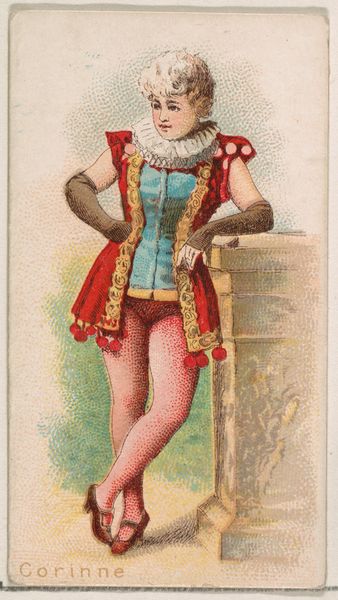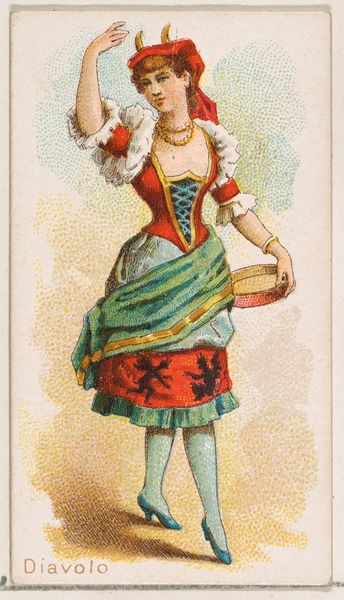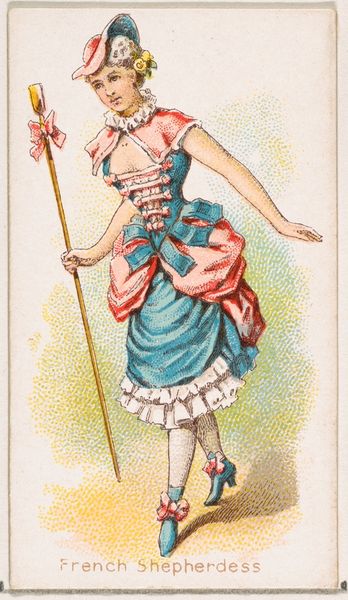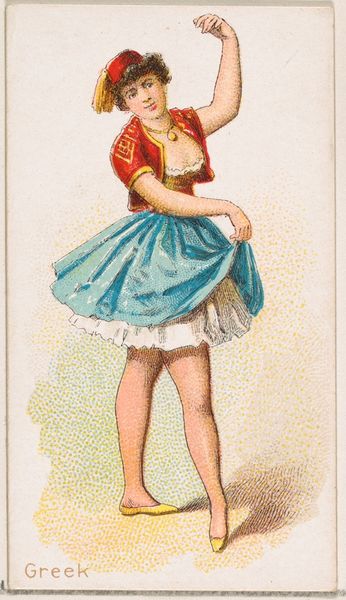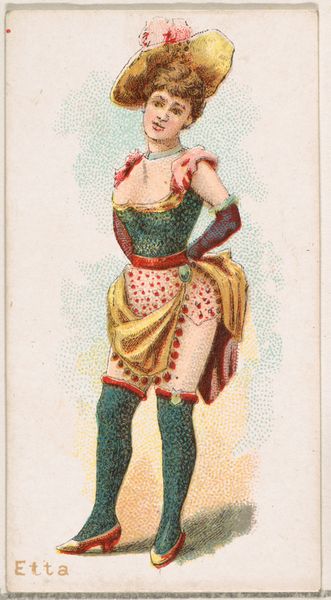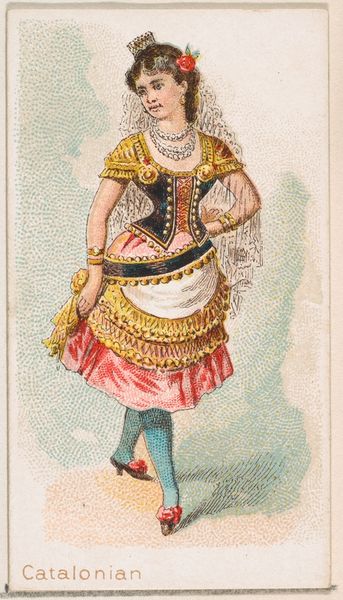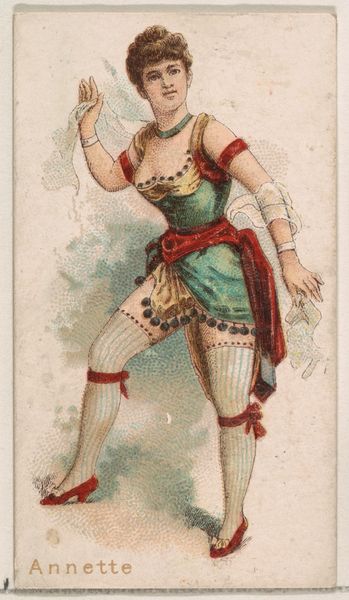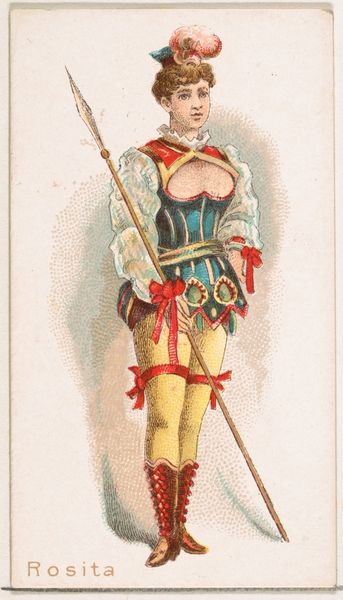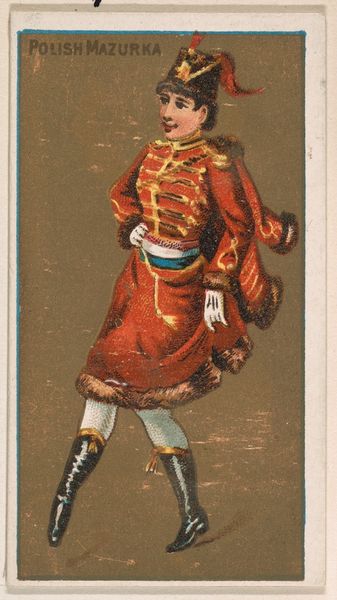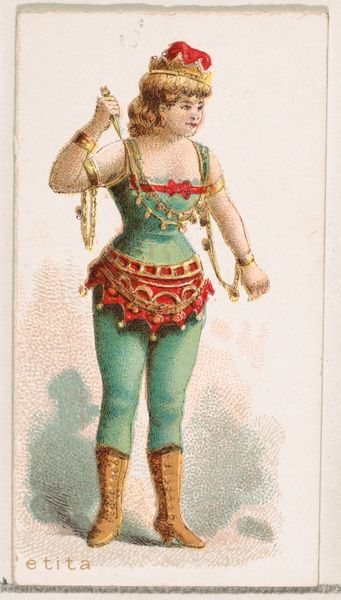
Dora, from the Ballet Queens series (N182) issued by Wm. S. Kimball & Co. 1889
0:00
0:00
drawing, coloured-pencil, print
#
portrait
#
drawing
#
coloured-pencil
# print
#
impressionism
#
figuration
#
coloured pencil
#
watercolour illustration
#
genre-painting
Dimensions: Sheet: 2 3/4 × 1 1/2 in. (7 × 3.8 cm)
Copyright: Public Domain
Curator: This vibrant little print, titled "Dora, from the Ballet Queens series" by William S. Kimball & Co., was produced around 1889. It's a coloured pencil drawing, reproduced as a print. The original was likely commissioned to be included in cigarette packs! Editor: It's surprisingly bold. The colours are bright, almost jarring, especially the clash between the green-yellow skirt and those bright blue stockings. There is something so artificial in the colour scheme, so detached from the actual conditions that inform women's existence, that it seems very strange. Curator: Exactly! And consider the means of its dissemination. These weren't high art objects but rather mass-produced collectables distributed with tobacco products. The drawing style, despite mimicking impressionism, becomes just another cog in the capitalist machine, fueling both consumerism and gendered expectations. Editor: It speaks volumes about how women performers were commodified during that era, packaged and consumed alongside leisure products. The "Ballet Queen" series evokes themes about labor conditions, too; we can imagine these women forced into very gendered roles. Curator: The medium itself supports that interpretation. Colored pencils and printmaking were much more accessible than painting. The choice reflects a turn-of-the-century interest in mass culture and challenges elitist notions of "high art". Consider also the manufacturing processes involved: labor divisions within Kimball's factory would have standardized the work across various draftsmen. Editor: Also, what does it mean to name her “Dora”? Her very name signifies not just the ballerina’s performance but the artist's as well as the producer’s labor and the consumer’s passive and unquestioned adherence to these conditions that exploit all participants. Curator: And consider who the product targeted! Exclusively the smoking gentleman. These images acted as a diversion, perhaps from his own complicity in systems of production where men largely profited from, amongst others, ballet dancers like "Dora," trapped in precarious performance contracts and expectations. Editor: These figures were part of an elaborate theatre for promoting new ideologies around women's roles, as decorative items ready for male consumption and power consolidation, within a wider landscape of structural class divides and discrimination. Curator: Right, there is always a power dynamic, so blatant, on display. Thanks for pointing that out. Editor: Indeed. Examining an unassuming object like this suddenly casts new light onto late 19th-century gender politics. Curator: Yes, considering both the materiality of its production and the political context helps us challenge the traditional art historical canon.
Comments
No comments
Be the first to comment and join the conversation on the ultimate creative platform.
